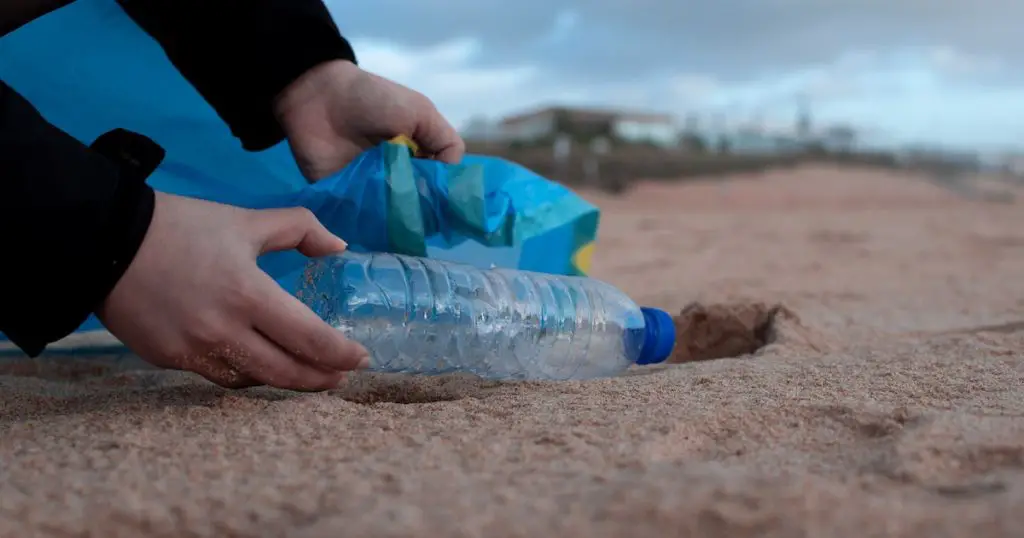Climate change isn’t just a global issue; it’s a local one too. The community of Prescott, Arizona, faces unique environmental challenges that require specific solutions. This article aims to outline climate adaptation strategies in Prescott, offering a roadmap that can help the community cope with a rapidly shifting climate.

We’ll delve into everything from the state of local policy to technological solutions, providing a comprehensive guide that involves all stakeholders. So, let’s get started, shall we?
Understanding the Local Climate: Prescott
Prescott is situated in the central highlands of Arizona, at an elevation of approximately 5,400 feet. This high-desert climate has traditionally been characterized by moderate temperatures and a good deal of sunshine. However, recent years have seen shifts in this once-stable environment.
Understanding the local climate is crucial for framing adaptation strategies. According to Arizona State University’s Climate Science department, Prescott and the surrounding regions are experiencing warming trends, inconsistent precipitation, and increased occurrence of extreme weather events.
These changes necessitate immediate attention and the adoption of adaptive measures to safeguard both the environment and the community living within it.
The Risks and Challenges
The risks posed by climate change in Prescott are multi-faceted. Rising temperatures are becoming a concern, with heat waves becoming more frequent and intense. According to the National Weather Service, the region has seen a noticeable increase in the number of days with temperatures exceeding 90 degrees Fahrenheit.
Wildfires are another significant challenge. The arid landscape and increasing temperatures make the region prone to fires. Many remember the devastating Yarnell Hill Fire of 2013, which should serve as a cautionary tale for the urgency of adopting climate adaptation strategies.
Moreover, water scarcity is becoming a critical issue. The United States Geological Survey (USGS) has reported declining water levels in many of Arizona’s reservoirs. In Prescott, this could mean stricter water-use policies and potentially higher costs for consumers.
The natural world is also affected. Changes in local flora and fauna have been observed, with some species struggling to adapt to the changing conditions. This impacts not just the environment but also tourism, a significant economic driver for the area.
The Stakeholders
When it comes to adapting to climate change, it’s not a one-person job. A variety of stakeholders need to be involved in this intricate process.
Local government plays a pivotal role, especially in policy-making and resource allocation. Their decisions can set the tone for broader community actions.
Residents are not just passive beneficiaries; they are active stakeholders. The effectiveness of any climate adaptation strategy depends on community buy-in and participation. The choices people make daily, from water usage to waste management, have a lasting impact.
Businesses, particularly those in sectors like tourism and agriculture, have a vested interest in climate adaptation. Changes in weather patterns can affect their bottom line, making it imperative for them to be a part of the solution.

Lastly, environmental organizations are crucial for advocacy, education, and sometimes even for implementing local initiatives. Groups like Prescott Creeks play an active role in conservation efforts that can be part of broader adaptation strategies.
Regulatory Environment and Policy Support
National and state-level policies serve as a framework within which local adaptation can occur. Federal policies, such as the Clean Water Act, provide guidelines and funding opportunities for local initiatives.
Similarly, state policies offer platforms for local adaptation. Arizona’s water management laws and its participation in regional climate coalitions can serve as tools that Prescott can leverage for its local strategies. It’s essential to align local initiatives with state and federal resources for maximum effectiveness.
Additionally, local ordinances can directly target Prescott’s specific needs. Whether it’s a new zoning law or a water conservation mandate, local laws can be tailored to address the community’s unique challenges.
Land Use and Zoning Adaptations
Prescott has begun to understand the importance of smart land use in mitigating climate risks. The local government has started revising zoning laws to make them more climate-resilient, allowing for greater flexibility in land use.
Open green spaces and urban forests serve multiple purposes. Not only do they provide recreational areas, but they also act as natural cooling zones, especially vital as temperatures rise. These areas also act as buffers in flood conditions, absorbing excess water and reducing runoff.
Infrastructure Changes
Infrastructure is the backbone of any community, and for Prescott, it needs to be robust and resilient. Water-efficient systems are becoming increasingly essential. From residential rainwater harvesting to wastewater treatment and recycling, these technologies can help counterbalance the water scarcity issue.
Fire-resistant building materials can go a long way in protecting against wildfires. New constructions are advised to use materials that have a higher fire resistance rating, providing an added layer of security.
Renewable energy installations, like solar panels, are another crucial aspect of sustainable infrastructure. Not only do they reduce the dependency on fossil fuels, but they also offer an economical alternative for both residents and businesses. According to the U.S. Energy Information Administration, renewable energy is becoming more cost-competitive with traditional forms of energy.
Public Health Preparedness
A warmer climate inevitably brings health risks, such as heat stress and an increased prevalence of vector-borne diseases. It’s crucial to have strategies in place that safeguard public health.
Public awareness programs, often in collaboration with local healthcare providers, can educate the public about the risks of heat stress and how to mitigate them. Simple guidelines, like staying hydrated and avoiding strenuous activities during heatwaves, can save lives.
Emergency response plans are equally important. Whether it’s a wildfire or a heatwave, having a well-coordinated emergency response can drastically reduce the impact of such events on public health.
Economic Resilience
A changing climate doesn’t just affect the environment; it also impacts the economy. It’s crucial for Prescott to build economic resilience as part of its adaptation strategy.
Diversifying the local economy can offer a buffer against climate-induced risks. For example, if tourism takes a hit due to extreme weather events, having other robust economic sectors can keep the economy stable.

Sustainable tourism is another avenue worth exploring. With its natural beauty and historical sites, Prescott has a lot to offer. Investing in sustainable tourism initiatives can make the area more appealing to visitors while minimizing environmental impact.
Support for local businesses, particularly those that are adopting sustainable practices, can be a win-win for everyone. Whether through grants or tax incentives, encouraging businesses to go green can have long-lasting benefits for the community.
Technological Solutions
In the 21st century, technology plays a significant role in addressing complex issues like climate change. In Prescott, water recycling technologies offer an innovative solution to water scarcity issues. These technologies not only conserve water but also reduce the cost of water treatment.
Fire prediction and monitoring systems use a combination of satellite imagery, on-ground sensors, and advanced algorithms to predict the likelihood of wildfires. These systems can provide precious time for emergency services to prepare and for residents to evacuate if needed.
Smart grids for energy management can make a significant impact. These grids allow for real-time monitoring of electricity usage and can automatically switch to renewable sources when available.
This ensures a more efficient use of energy, lessening the load on non-renewable sources and decreasing greenhouse gas emissions. According to the U.S. Department of Energy, smart grids are crucial for integrating renewable resources efficiently into our energy systems.
Financial Considerations
Adapting to climate change is an urgent need, but it also requires financial resources. Let’s talk money for a moment.
Budget allocations from the local government are a starting point. Earmarking funds specifically for climate adaptation efforts can accelerate the implementation of crucial projects.
Public-Private Partnerships (PPPs) offer another route. By collaborating with businesses, the local government can leverage additional resources and expertise. These partnerships can be particularly effective for large-scale projects like infrastructure upgrades or renewable energy installations.
Grants and subsidies for green initiatives are also a viable option. Whether it’s federal grants for community projects or state subsidies for businesses adopting sustainable practices, external funding can go a long way.
- Here are some bullet points summarizing financial avenues:
- Budget Allocations from Local Government
- Public-Private Partnerships (PPPs)
- Grants and Subsidies from Federal and State Governments
Community Involvement
You know the saying, “It takes a village to raise a child”? Well, it also takes a community to adapt to climate change.
Community consultations and town hall meetings offer a platform for residents to voice their concerns and suggestions. This grassroots input is invaluable for tailoring climate strategies that work for everyone.
Volunteering opportunities, often organized by local NGOs or community centers, can turn residents into active participants in climate adaptation efforts. From tree planting events to community clean-ups, these activities foster a sense of ownership and responsibility among community members.
Grassroots initiatives spearheaded by local activists or community organizations can sometimes fill gaps that governmental efforts might miss. These initiatives are often highly localized and targeted, making them highly effective.
Education and Awareness
Education is one of the most potent tools for change. Schools can incorporate climate education in their curricula, instilling awareness from a young age.
Community workshops can serve as adult education centers, where residents can learn about sustainable practices. Whether it’s a workshop on water-saving techniques or a seminar on renewable energy options, these programs empower individuals to make informed decisions.
Social media campaigns can also play a significant role. Leveraging platforms like Facebook or Twitter can spread awareness rapidly and engage the community in ongoing discussions and initiatives.
Monitoring and Evaluation
While it’s essential to implement strategies, it’s just as crucial to monitor their effectiveness. Key Performance Indicators (KPIs) can serve as measurable goals that help evaluate the success of adaptation efforts.
Annual environmental audits can provide a comprehensive look at how well the community is doing in terms of its climate goals. These audits can inform future strategies and offer an opportunity for course correction.

Feedback loops with the community and other stakeholders ensure continuous improvement. By regularly soliciting feedback, adaptation strategies can be adjusted as needed, ensuring they remain effective and relevant.
FAQs:
What is climate adaptation?
Climate adaptation involves preparing for and responding to the impacts of climate change, to minimize harm and make the most of any potential benefits.
Why is Prescott particularly vulnerable to climate change?
Prescott’s geographic location and climate make it susceptible to increased temperatures, wildfires, and water scarcity.
How can individuals contribute to climate adaptation efforts?
Individual actions, from conserving water to supporting local, sustainable businesses, can contribute to broader community efforts.
Are there any financial incentives for going green?
Yes, there are grants, subsidies, and even tax breaks for adopting sustainable practices, both for individuals and businesses.
Conclusion
Adapting to a changing climate is a daunting task, but it’s also an urgent one. In Prescott, it involves a multi-pronged approach that encompasses everything from policy changes to community initiatives. It’s a collective responsibility, one that requires each of us to do our part.
Together, we can make Prescott a model for how communities can adapt to our changing world. Thank you for investing your time in this essential topic. Now, let’s get to work, shall we?



Leave a Comment
You must be logged in to post a comment.